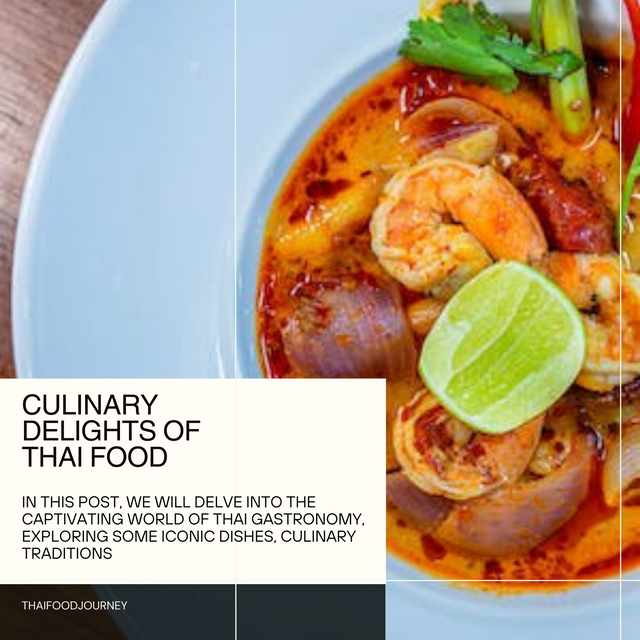Exploring the Culinary Delights of Thai Food on Steemit
Welcome, Steemit community, to a tantalizing journey through
the flavors, aromas, and vibrant culture of Thai cuisine.
Thai food is renowned worldwide for its distinctive balance
of sweet, sour, spicy, and salty flavors, coupled with its
artful presentation and use of fresh ingredients. In this post,
we will delve into the captivating world of Thai gastronomy,
exploring some iconic dishes, culinary traditions, and the rich
history behind this beloved cuisine.
Thai Cuisine: A Fusion of Flavors and Influences
Thai cuisine is a harmonious blend of influences from neighboring
Southeast Asian countries, as well as Chinese, Indian,
and European culinary traditions. The result is a diverse
range of dishes that cater to a multitude of tastes
and preferences. From the fiery spiciness of Tom Yum soup
to the creamy richness of Green Curry, Thai food offers
a spectrum of flavors that entices and satisfies the palate.
Iconic Thai Dishes:
Pad Thai: A world-famous stir-fried noodle dish that encapsulates
the essence of Thai street food. It features thin rice noodles,
shrimp or chicken, bean sprouts, tofu, and a tantalizing
combination of tamarind, fish sauce, sugar, and lime juice.
Tom Kha Gai: This aromatic and coconut-based soup is a Thai
classic. It combines tender chicken, galangal, lemongrass,
kaffir lime leaves, and a harmonious balance of flavors
from lime juice, fish sauce, and chili.
Massaman Curry: A fragrant and mildly spicy curry that reflects
Thai cuisine's Indian influence. This dish features tender
chunks of meat (often beef or lamb), potatoes, peanuts,
and a medley of spices like cardamom, cinnamon, and cloves.
Som Tum (Papaya Salad): A refreshing and tangy salad made with
shredded green papaya, tomatoes, chili, peanuts, and lime dressing.
The contrasting flavors of sweet, sour, and spicy make this
a popular dish among locals and visitors alike.
Culinary Traditions and Techniques:
Thai cooking is characterized by its emphasis on freshness,
balance, and the skillful use of herbs and spices. Thai chefs
employ a variety of techniques such as stir-frying, grilling,
steaming, and pounding ingredients to release their flavors.
The liberal use of aromatic herbs like basil, cilantro,
and mint adds layers of complexity to the dishes, while chili
peppers provide the signature spiciness.
The Thai Dining Experience:
Thai food is not just about the dishes; it's also about
the communal experience of sharing a meal with friends and family.
The concept of "sanuk" (fun) is deeply ingrained in Thai culture,
and this joyous spirit is often reflected in the convivial
atmosphere of Thai dining. From the bustling street food stalls
to the elegant restaurants, the Thai people's warmth
and hospitality enhance the culinary experience.
Beyond the Plate: Thai Food and Culture:
Thai cuisine is intimately connected to the rich cultural
heritage of Thailand. Many Thai dishes have deep historical
roots and are associated with specific regions or festivals.
Exploring Thai food is an opportunity to learn about the
country's traditions, beliefs, and the strong influence
of Buddhism, which encourages mindfulness and gratitude
for each meal.
Conclusion:
Thai food is a culinary treasure trove that captivates
food lovers worldwide with its explosive flavors, diverse
dishes, and vibrant cultural heritage. Whether you're savoring
the pungent aroma of a steaming bowl of Tom Yum or indulging
in the delicate interplay of spices in a Thai curry, the cuisine
offers an unforgettable sensory experience. So, venture forth,
immerse yourself in the world of Thai gastronomy,
